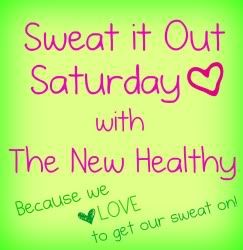I have to say, I was pretty motivated this week. This was my first week back on a running/biking schedule since ... well, let's just say a long time. I signed up for the
Strasburg Duathlon (5K run, 30K bike, 5K run) on April 14 and the
Alexandria Half Marathon on May 27. Meaning that until April 14, I will be training both on the bike and off. (My goal for both races is to beat my PR.) This may seem difficult, because I'll have to fit in both a long run and a long ride every weekend, and shorter runs, one short ride and yoga during the week. But I think it will be really good for me to have more than one goal until the final weeks leading up to the half. I have seen the benefits of cross training before - I lost some weight in 2010 doing a boot camp, and, in turn, I got my 5K PR that summer.
So, instead of writing about health news today, rather, I'll write about what health news has taught me about the benefits of cross training. Because
I'm no expert, I'm not going to write these as why "you" should cross train, but rather why I cross train
. This is what five years of running has taught me.
Top 10 Reasons Why I Cross Train
1 It prevents overuse injuries. If you're actively cross training, you're spending less time doing your sport, meaning that you're less likely to overuse your muscles in a week.
Runner's World
2 It allows you to do other sports you enjoy. So, yes, you love running. But how about hiking? Rock climbing? Swimming? You don't have to give those up. For me, swimming/yoga once a week is refreshing for me when I'm training for a half marathon.
3 It challenges your muscles. "Our bodies tend to perform harder if
we challenge our muscles by varying the workout and its intensity."
WebMD
4 It lessens the pressure. I
find that when I get really really into training for a race, I often
forget that I enjoy running. Adding other activities into my week makes
me less like I am on a strict "schedule."
5 It is rehabilitating. Your muscles enjoy the break.
Runner's World
6 It keeps you moving during recovery days. If you don't feel like sitting still for a full day when training for an event, cross training
allows you to have an active day on your "off" day.
Runner's World
7 It keeps you motivated. Cross training prevents you from getting bored with your activity of choice by breaking up your workout routine. "Tenable us to maintain motivation in physical exercise, we need to
keep it fresh and enjoyable!"
WebMD
8 It prevents muscle imbalances. It works other muscle groups than
normal activity, balancing your body out. Cyclists could use a good
swim or two to build back muscles. Runner's with tight hamstrings can
benefit from yoga.
9 It is challenging. When you are constantly doing one activity, your body gets used to it. Cross training is hard because it pushes your body out of its comfort zone. When you alter your routine, you confuse your muscles and make them work harder.
10 It makes you stronger all over. While performing your activity of choice may help you build the muscles that are directly related, cross training makes you more powerful overall by strengthening complimentary muscles.
Runner's World
What do you think?
How many times a week do you cross train when training for an event or when in-season for your sport?
Has your performance improved because you cross train?
 |
| Cheeseball picture before my ride yesterday. |
Weekend Word:
Eating Citrus Fruit May Lower Women's Stroke Risk
9-year-old dies after being forced to run 3 hours after lying about eating a candy bar
Physical Activity Keeps Workers Mentally Fit




.jpg)






